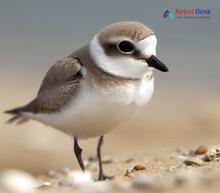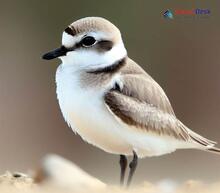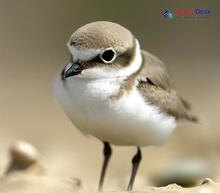Charadrius, a captivating group of small shorebirds, has garnered the attention of bird lovers across the world. These amazing birds have evolved over millions of years, adjusting to various habitats and environments all over the planet. In this article, we'll explore the Charadrius species' evolution and their presence in the stunning landscapes of Nepal.
A Look at Their Evolutionary Roots
The Charadrius genus is part of the Charadriidae family and comprises several plover species. To learn about their evolutionary past, researchers examine morphological features and conduct DNA analysis. Ongoing research has revealed that the Charadriidae family can be traced back to the early Miocene epoch, roughly 23 million years ago. This information allows us to appreciate their incredible adaptability as they've flourished throughout Earth's various geological changes.
Thriving in Diverse Habitats
Charadrius birds inhabit an impressive variety of environments, ranging from sandy shores and grassy fields to mudflats. Their adaptability can be attributed to their extensive diet that consists of insects, crustaceans, mollusks, worms, and occasionally tiny fish. This dietary flexibility has played a significant role in their widespread distribution and successful colonization of diverse habitats.
Charadrius Species in Nepal
Nepal, situated between China and India within South Asia's heartland, is renowned for its gorgeous landscapes teeming with an assortment of plants and animals. Amidst this rich biodiversity are numerous Charadrius species that gracefully inhabit varying elevations. Two noteworthy examples found in Nepal include:
1. Snowy Plover (Charadrius nivosus) – Typically discovered in high-altitude wetlands and lakes, these elegant migratory guests in Nepal feature stunning pale plumage with dark markings.
2. Lesser Sand-Plover (Charadrius mongolus) – With breeding grounds in Central Asia, the Lesser Sand-Plover migrates south to spend winters in South Asia, including the unspoiled shores of Nepal's rivers and other freshwater sources.
Conservation: A Collective Effort
Although many Charadrius birds have successfully adapted to their surroundings, some species face challenges from factors such as habitat loss and climate change. It's vital for researchers, conservationists, locals, and tourists alike to work together in preserving these birds' habitats and ensuring their survival for future generations by supporting eco-friendly tourism and following protective measures in their residing areas.
In summary, the Charadrius genus showcases a fascinating evolutionary tale of shorebirds that have established a remarkable presence worldwide. By investigating their evolutionary path and examining their existence within Nepal's unique habitats, we can appreciate both their resilience and vulnerability as current inhabitants of our mutual planet.




